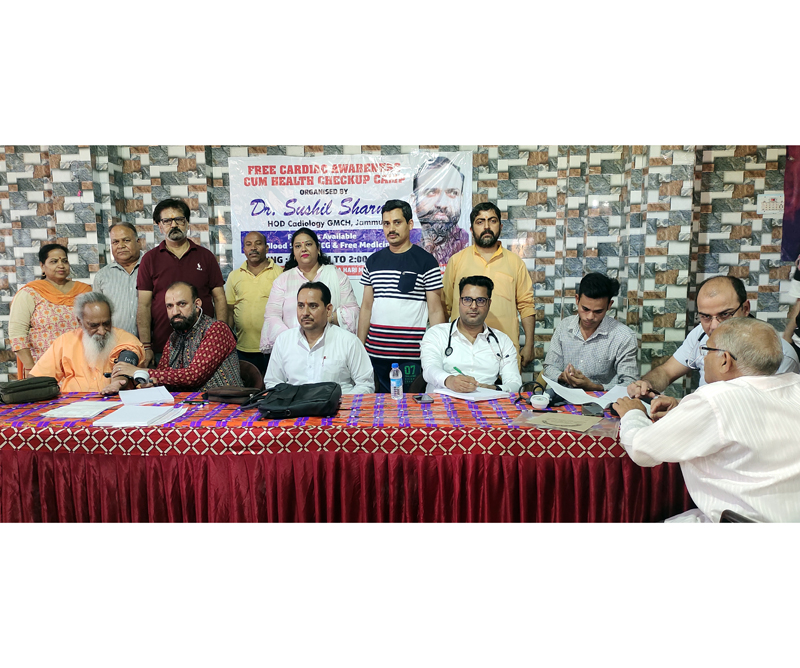Excelsior Correspondent
JAMMU, June 4: As pollution has shown a progressive and unrelenting course in recent times, Head Department of Cardiology Dr. Sushil Sharma held a day long cardiac awareness cum health check up camp at Hari Mandir , Rehari Colony Jammu in which people of all age groups and communities participated and they were educated about the rising prevalence of cardiac ailments due to ambient air pollution and ways to decrease the same. More than 450 people were screened, evaluated, diagnosed and free medicines were given as per the requirements.
While interacting with the people Dr Sushil stated that over the last decade, a growing body of epidemiological and clinical evidence has led to a heightened concern about the potential deleterious effects of ambient air pollution on health and its relation to heart disease and stroke. Of special interest are several environmental air pollutants that include carbon monoxide, oxides of nitrogen, sulfur dioxide, ozone, lead, and particulate matter (“thoracic particles” [PM10] <10 mm in aerodynamic diameter, “fine particles” [PM2.5] <2.5 mm, and “coarse particles” [PM10 to 2.5]).
These pollutants are associated with increased hospitalization and mortality due to cardiovascular disease, especially in persons with congestive heart failure, frequent arrhythmias, or both. The well-established causal associations between active and passive smoking with heart disease and stroke support the plausibility of an adverse effect of PM on the cardiovascular system, he added.
He elaborated that air pollution may accelerate the development of coronary atherosclerosis and worsen its sequelae. Some of these effects may occur over time, as with acceleration of the progression of atherosclerosis, or rather abruptly, as with the triggering of an arrhythmia or myocardial infarction by acute inflammatory responses, altered platelet adhesiveness, or perhaps vascular endothelial dysfunction. The putative biological mechanisms linking air pollution to heart disease involve direct effects of pollutants on the cardiovascular system, blood, and lung receptors, and/or indirect effects mediated through pulmonary oxidative stress and inflammatory responses. Direct effects may occur via agents that readily cross the pulmonary epithelium into the circulation.
Others who were part of this camp include Dr Nasir Ali Choudhary, Dr Anitipal Singh and Dr Dhaneshwer Kapoor and others.


